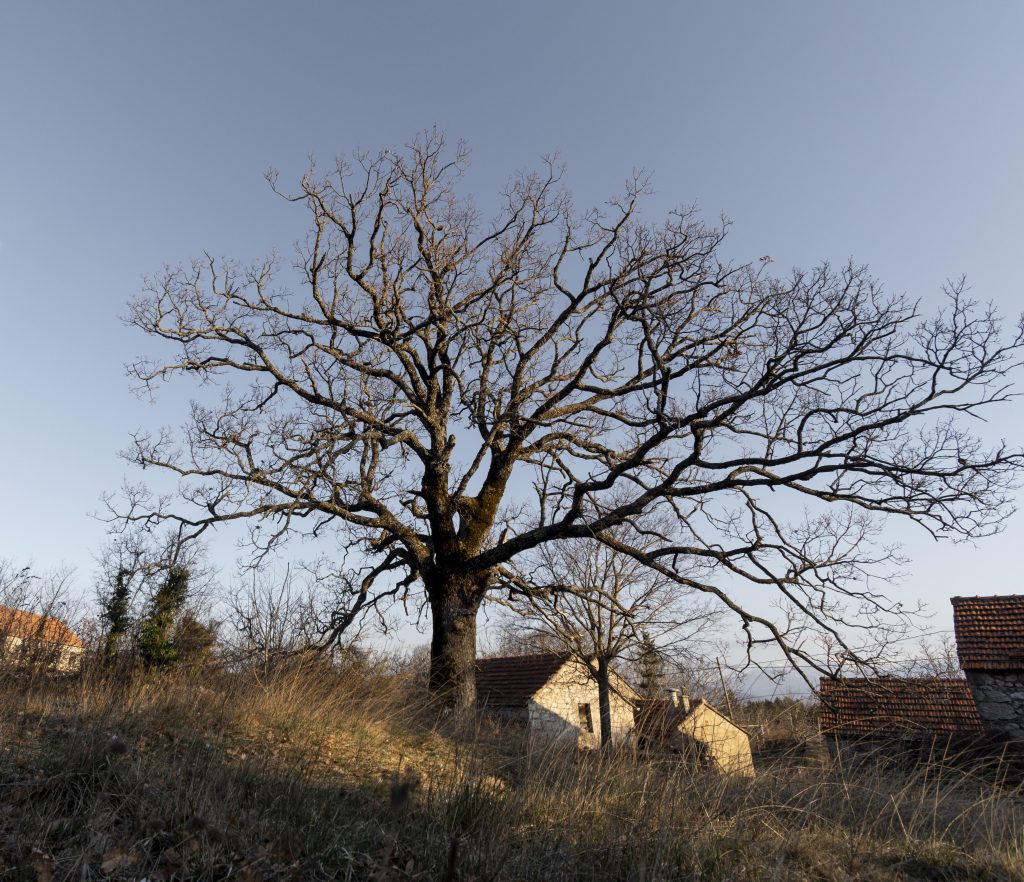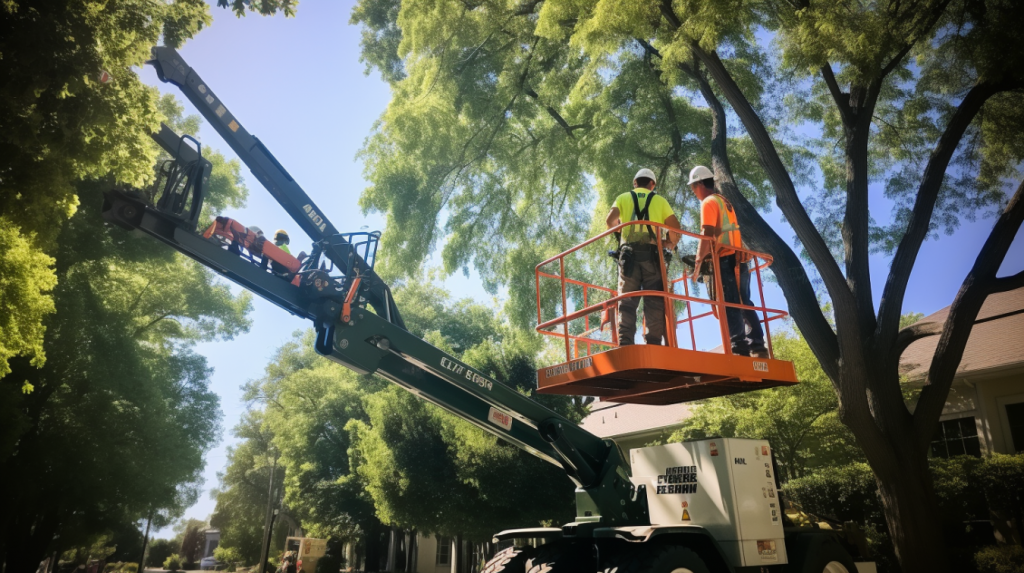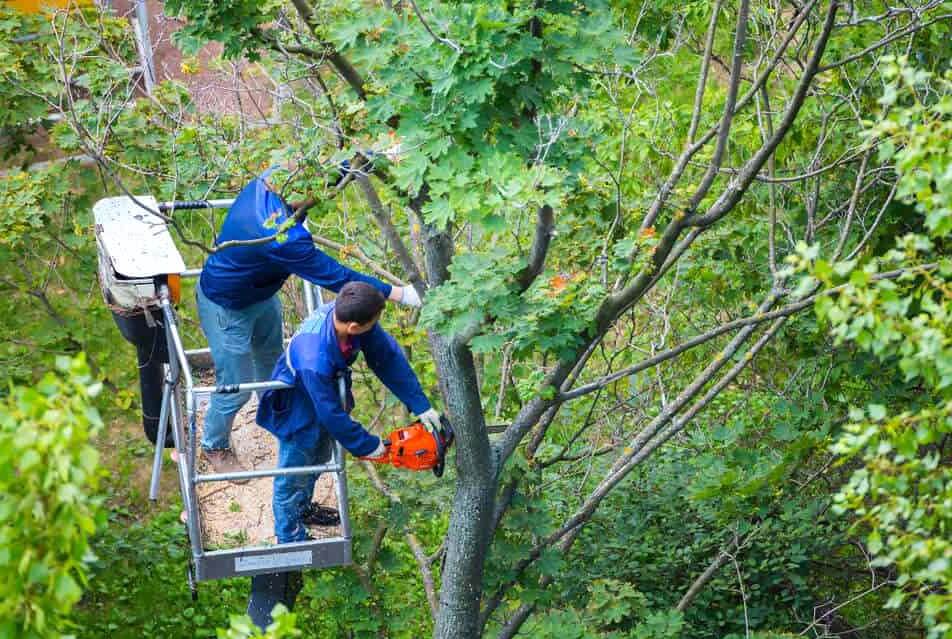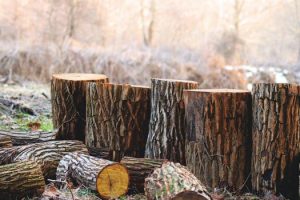The Cost of Tree Services in Utah
THE COST OF TREE SERVICES: WHAT TO EXPECT
The cost of tree services can vary widely depending on several factors, including the type of service needed, the size and location of the tree, the complexity of the job, local labor rates, and the expertise of the tree care company. Tree services encompass a range of tasks such as tree removal, pruning, trimming, stump grinding, disease treatment, and more. Here’s a breakdown of the factors that influence the cost of tree services:

-
Type of Service:
- Different tree services have different levels of complexity and equipment requirements. For example, tree removal is generally more expensive than routine trimming or pruning.
-
Tree Size and Species:
- The size of the tree, its height, and its species all impact the cost. Larger trees or those that are harder to access may require more time and effort to complete the job safely.
-
Location and Accessibility:
- The location of the tree on the property and its accessibility can affect the cost. Trees near buildings, power lines, or other obstacles might require specialized equipment or techniques, which can increase the price.
-
Equipment and Labor:
- The type of equipment needed for the job, such as cranes, chippers, and stump grinders, can influence the cost. Additionally, the number of skilled laborers required for the task affects the overall price.
-
Complexity of the Job:
- If the tree has complex branch structures, is diseased, or poses safety risks, the job may require more time, skill, and precautionary measures, potentially increasing the cost.
-
Urgency:
- Emergency services, such as removing a fallen tree after a storm, might incur higher costs due to the need for immediate response and potentially working under adverse conditions.
7. Additional Services:
– Some tree services might include additional tasks, such as debris removal, stump grinding, or disease treatment, which can add to the overall cost.
8. Local Regulations and Permits:
– Some areas require permits for tree removal or certain services, which might involve additional costs.
9. Reputation and Expertise of the Company:
– Established and reputable tree care companies with certified arborists and skilled crews might charge higher rates for their expertise and quality of work.
10. Geographic Location:
– Costs can vary significantly based on the region or city due to differences in local labor rates, cost of living, and market demand.
11. Consultation and Inspection Fees:
– Some companies charge for initial consultations or tree assessments to determine the scope of work needed.
12. Quantity of Trees:
– If you require multiple trees to be serviced, some companies might offer a discount for bulk work.
It’s important to note that while cost is a factor, choosing a reputable and experienced tree care company is crucial to ensure the safety of your property and the well-being of your trees. Obtaining multiple quotes and understanding the details of what each company provides can help you make an informed decision. Always prioritize the quality of work and the safety measures taken by the company over solely considering the lowest price.
Commercial tree services encompass a range of professional tree care and maintenance offerings tailored specifically for businesses and commercial properties. These services are essential for maintaining the health, safety, aesthetics, and functionality of the landscape within a commercial setting. Here’s an in-depth look at what commercial tree services entail and why they are crucial for businesses:
What Commercial Tree Services Entail:

-
Tree Health Assessment:
- Certified arborists evaluate the health of trees, identifying signs of disease, pest infestations, decay, and structural issues.
-
Pruning and Trimming:
- Regular pruning and trimming improve tree structure, remove dead or hazardous branches, and enhance the overall appearance of the landscape.
-
Tree Removal:
- When necessary, professionals safely and efficiently remove trees that pose a risk to property, people, or other trees due to disease, decay, or structural instability.
-
Emergency Services:
- In the event of storms or sudden tree-related incidents, 24/7 emergency services address fallen trees, hanging branches, and hazardous situations promptly.
-
Stump Grinding:
- Stump removal services use specialized equipment to grind tree stumps below the surface, allowing for safer landscaping and potential replanting.
-
Planting and Transplanting:
- Experts recommend suitable tree species for the commercial environment and ensure proper planting techniques to promote healthy growth.
-
Landscape Design and Planning:
- Arborists collaborate with landscape designers to integrate trees into commercial spaces, enhancing aesthetics and functionality.
-
Tree Preservation during Construction:
- Professionals safeguard existing trees during construction projects, implementing strategies to protect roots and branches from damage.
-
Disease and Pest Management:
- Arborists develop customized plans to treat and manage diseases and pests, preserving the health of trees and preventing their spread.
-
Mulching and Soil Health:
- Services include mulching to improve soil structure, retain moisture, and provide nutrients to trees’ root systems.
-
Consultation and Expert Advice:
- Arborists offer expert guidance on tree care practices, planning, and long-term maintenance strategies.
Why Commercial Tree Services Are Essential for Businesses:
- Enhanced Aesthetics: Well-maintained trees contribute to an appealing and professional commercial landscape, making a positive impression on clients, customers, and visitors.
- Property Value: Proper tree care enhances property value, attracting potential buyers, tenants, and investors.
- Safety and Liability Mitigation: Regular tree inspections and maintenance reduce the risk of falling branches or trees, minimizing the potential for accidents and liability claims.
- Regulatory Compliance: Commercial tree services ensure compliance with local regulations and ordinances related to tree care and preservation.
- Environmental Stewardship: Healthy trees contribute to improved air quality, biodiversity, and overall environmental sustainability.
- Employee and Customer Experience: Providing a safe and visually pleasing outdoor environment enhances the well-being and experience of employees and customers.
- Long-Term Cost Savings: Timely tree care and disease prevention can save costs by avoiding expensive emergency tree removal or property damage.
- Sustainability and Brand Image: Demonstrating a commitment to tree care aligns with sustainability goals and portrays a responsible brand image.
In summary, commercial tree services offer businesses tailored solutions to maintain and enhance the beauty, safety, and value of their properties. By investing in professional tree care, businesses can ensure a vibrant and inviting outdoor space that positively impacts their reputation and bottom line.
Choosing the Right Commercial Tree Service:
Selecting a reputable and qualified tree service provider is crucial to ensuring quality work, safety, and professionalism in managing your commercial property’s trees. Here’s a comprehensive guide on how businesses can make informed decisions when choosing a tree service provider:

-
Research and Recommendations:
- Start by asking for recommendations from colleagues, friends, or other businesses in your area who have used tree services. Online reviews and ratings can also provide valuable insights.
-
Check Credentials:
- Verify that the tree service provider is fully licensed, insured, and bonded. This protects both your property and their employees in case of accidents.
-
Certified Arborists:
- Look for companies that employ certified arborists. Arborists have specialized knowledge in tree care and are trained to provide expert advice and services.
- Experience and Reputation:
- Choose a company with a proven track record of providing tree services in commercial settings. A company’s longevity and positive reputation are indicators of reliability.
-
Proper Equipment:
- Ensure that the company has the necessary equipment and tools to handle various tree care tasks safely and efficiently.
-
Safety Practices:
- Inquire about their safety practices and protocols. A reputable company will prioritize safety for both their workers and your property.
-
Written Estimates:
- Obtain written estimates from multiple tree service providers. The estimates should include details about the scope of work, cost breakdowns, and timelines.
-
Comprehensive Services:
- Choose a provider that offers a range of tree services, including pruning, removal, planting, and disease management. This ensures they can address all your tree care needs.
- References:
- Ask for references from past commercial clients. Contact these references to inquire about their experience with the company’s services.
- Written Contracts: – Once you’ve selected a provider, ensure that all terms of the service, including scope, costs, and timeline, are outlined in a written contract.
- Communication: – Choose a provider that communicates clearly and promptly. They should be willing to address your questions and concerns.
- Eco-Friendly Practices: – Inquire about their approach to sustainable and eco-friendly tree care practices, which align with your business’s environmental goals.
- Insurance Coverage: – Confirm that the provider has liability insurance and workers’ compensation coverage for their employees. This protects you from potential liability in case of accidents.
- Site Visit and Evaluation: – A reputable provider will conduct an on-site evaluation of your property to understand your tree care needs and tailor their services accordingly.
- Transparency: – A reliable company will be transparent about their processes, pricing, and recommendations. They should provide clear explanations of the work they plan to undertake.
- Emergency Services: – Inquire about their availability for emergency tree services, as quick response during unforeseen situations is crucial.
By conducting thorough research, checking credentials, and considering these factors, businesses can confidently select a reputable and qualified tree service provider. Investing time in choosing the right partner ensures that your commercial property’s trees receive the professional care they need to thrive and contribute positively to your property’s overall appeal and value.
About Salt Lake City, Utah
Salt Lake City is the capital and most populous city of Utah, United States. It is the seat of Salt Lake County, the most populous county in Utah. With a population of 200,133 in 2020, the city is the core of the Salt Lake City metropolitan area, which had a population of 1,257,936 at the 2020 census. Salt Lake City is further situated within a larger metropolis known as the Salt Lake City–Ogden–Provo Combined Statistical Area, a corridor of contiguous urban and suburban development stretched along a 120-mile (190 km) segment of the Wasatch Front, comprising a population of 2,746,164, making it the 22nd largest in the nation. It is also the central core of the larger of only two major urban areas located within the Great Basin.
Neighborhoods in Salt Lake City, Utah
Poplar Grove, The Avenues, Marmalade, Central City, Fairpark, Ballpark, Downtown, Capitol Hill, Woodbury, Neighborhood House, Rio Grande, The Neighborhood Hive, Rose Park Neighborhood Center, Neighborhood Services, Salt Lake City Community Development, University Neighborhood Partners, Airport East Business Park, Granary Row, Neighborhood Auto Service, Salt Lake City
Things To Do in Salt Lake City, Utah
Bus Stops in Salt Lake City, Utah to Truco Services, Inc.
Bus Stop in Greyhound: Bus Station Salt Lake City, Utah to Truco Services, Inc.
Bus Stop in Salt Lake Central Salt Lake City, Utah to Truco Services, Inc.
Bus Stop in Greyhound: Bus Stop Salt Lake City, Utah to Truco Services, Inc.
Bus Stop in Stadium Station (EB) Salt Lake City, Utah to Truco Services, Inc.
Bus Stop in South Salt Lake City Station Salt Lake City, Utah to Truco Services, Inc.
Bus Stop in 2100 S / 700 E (WB) Salt Lake City, Utah to Truco Services, Inc.
Bus Stop in Salt Lake Central Station (Bay A) Salt Lake City, Utah to Truco Services, Inc.
Bus Stop in 200 S / 1000 E (EB) Salt Lake City, Utah to Truco Services, Inc.
Bus Stop in South Salt Lake City Station Salt Lake City, Utah to Truco Services, Inc.
Bus Stop in 900 E / Wilson Ave (SB) Salt Lake City, Utah to Truco Services, Inc.
Bus Stop in Us Hwy 89 @ 270 S (N. Salt Lake) Salt Lake City, Utah to Truco Services, Inc.
Bus Stop in Courthouse Station Salt Lake City, Utah to Truco Services, Inc.
Driving Directions in Salt Lake City, Utah to Truco Services, Inc.
Driving Directions from Hidden Oak Tree Care to 4640 Commerce Dr, Murray, UT 84107, USA
Driving Directions from A Swedin Tree Expert to 4640 Commerce Dr, Murray, UT 84107, USA
Driving Directions from Atlas Tree Service to 4640 Commerce Dr, Murray, UT 84107, USA
Driving Directions from Diamond Tree Experts to 4640 Commerce Dr, Murray, UT 84107, USA
Driving Directions from Arbor+ to 4640 Commerce Dr, Murray, UT 84107, USA
Driving Directions from Integrated Tree Professionals to 4640 Commerce Dr, Murray, UT 84107, USA
Driving Directions from Urban Oaks Tree Service to 4640 Commerce Dr, Murray, UT 84107, USA
Driving Directions from Greenlite Tree Care to 4640 Commerce Dr, Murray, UT 84107, USA
Driving Directions from Heritage Tree Experts to 4640 Commerce Dr, Murray, UT 84107, USA
Driving Directions from Arborcare-Arborscape, Inc. to 4640 Commerce Dr, Murray, UT 84107, USA
Driving Directions from Arbornauts Tree Experts to 4640 Commerce Dr, Murray, UT 84107, USA
Driving Directions from Amen Trees to 4640 Commerce Dr, Murray, UT 84107, USA
Reviews for Truco Services, Inc. Salt Lake City, Utah
Marissa Burton
TruCo is a great company to work with for your commercial landscaping and snow removal needs! Rob is excellent to work with. He is very timely in providing quotes and has a lot of great feedback and suggestions to provide on what will look great, fit within your budget, and is knowledgeable on plants that will thrive with Utah's ever changing weather conditions. I have been impressed with TruCo's landscape maintenance as well as landscape projects which have had a quick turnaround time. I would highly recommend using TruCo!
Yvonne Olson
I experienced excellent all around service from landscape improvement design, scheduling and professional installation completed within the timeline we discussed. Rob, the manager does an excellent job of communicating, overseeing the install crew and making sure his customers are 100% satisfied with the job. Highly recommend TruCo for all landscaping needs.
Raymond Ferraro
Michael the tree guy is so smart. He knows all about tree removal, cutting and tree trimming services. Truco did amazing work for me. We had 16 very old and mature trees removed. The Truco team showed up on time ready to get the job done. They did amazing with clean up truly respect your property and your life. Communication was really good. They needed to move some things to get the stump grinder to our yard they put things back with no issues. Extremely professional and truly know what they're doing. If anyone is looking for professional tree removal or tree service you really should call Jason or Michael at Truco.
Heather Whiting
We hired TruCo to do a new install of sprinklers, sod, spigot, and bury downspouts. We even have a wifi transmitter for our control box we can access from an app on our phones! We absolutely love the professionalism and quality of their work!! Our sales rep Pete was the best to work with, we highly recommend him to anyone in the market for landscaping. It was awesome seeing the finished results and we're incredibly excited to enjoy our new space!
Jan Merideth
TruCo installed all of our plants, trees and shrubs, drip lines, and boulders. Then they installed our amazing beautiful firepit. We loved the results and they guarantee all plants and trees up to a year. They were great and easy to work with. They listened to our needs and wants and met them 100%. Our HOA sent us a letter telling us they appreciate all the work and the way our yard looks and let us know we added value to the property. Win/Win
